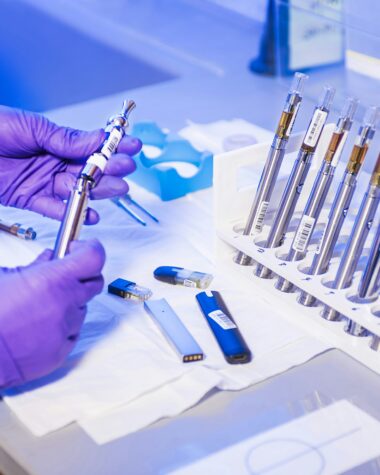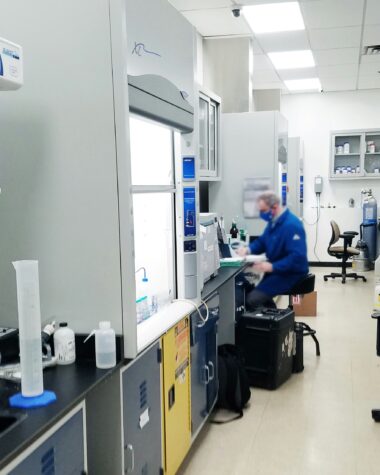Johnson & Johnson (NYSE:JNJ) is one of the most recognized and enduring names in global healthcare, with a history that spans more than a century. Founded in 1886, the company began as a small family business producing ready-to-use surgical dressings and antiseptics. Over time, it expanded into a diversified healthcare conglomerate, building a reputation for innovation, reliability, and leadership across pharmaceuticals, medical devices, and consumer health products. Its legacy is closely tied to advancements in modern medicine, as Johnson & Johnson has consistently played a role in shaping healthcare delivery worldwide.
Headquartered in New Brunswick, New Jersey, Johnson & Johnson has grown into a company with a market capitalization of over $400 billion, serving patients and consumers in more than 60 countries. The company operates through two core business segments: Innovative Medicine and MedTech. The Innovative Medicine division develops treatments in oncology, immunology, neuroscience, cardiovascular diseases, and infectious diseases, with several blockbuster drugs like Stelara and Darzalex driving significant revenue. The MedTech division encompasses surgical solutions, cardiovascular interventions, orthopedics, and vision care, providing life-saving technologies and minimally invasive innovations to improve patient outcomes.
Beyond its product portfolio, Johnson & Johnson is widely recognized for its long-standing commitment to research and development. With billions invested annually into innovation, the company has built a pipeline of therapies and technologies that continue to position it at the forefront of healthcare. Its global reach and partnerships with healthcare providers, governments, and institutions further strengthen its influence as a key player in addressing both urgent and long-term health challenges.
Johnson & Johnson’s reputation as a dividend aristocrat has also made it a favorite among income-focused investors. For decades, it has maintained a track record of consistently paying and raising dividends, offering shareholders a blend of stability and steady returns. This financial strength, combined with a diversified business model, has long underpinned its status as a cornerstone in many long-term investment portfolios.
At the same time, the company has not been without challenges. Its history includes navigating regulatory scrutiny, evolving healthcare policies, and ongoing litigation tied to its consumer and pharmaceutical products. Despite these headwinds, Johnson & Johnson has demonstrated resilience by adapting its operations and focusing on high-growth, high-demand areas of healthcare. Its ability to balance financial performance with innovation and global impact has allowed it to remain a leader in an industry that is constantly evolving.
Institutional Investors Are Quietly Trimming Holdings
One early warning sign for Johnson & Johnson is the trend among institutional investors. In the first quarter, Boston Family Office LLC reduced its stake in J&J by 2%, selling 1,742 shares and bringing its total holdings to 85,219 shares worth $14.13 million. While this may seem modest, it signals caution among professional money managers who often take a long-term view of risk. Other firms like Highline Wealth Partners and Harvest Fund Management initiated small positions, but the broader institutional picture shows 69.55% of the stock is held by institutions, a concentration that could exacerbate volatility if confidence erodes. When smart money begins trimming exposure, it often indicates that downside risks are outweighing upside potential in the near term.

CHECK THIS OUT: Exact Sciences (EXAS) Just Made Cancer Detection 100x Easier! and Soleno Therapeutics (SLNO): The Biotech Company That Could Make You Rich.
Earnings Beat Fails to Mask Long-Term Concerns
In July 2025, Johnson & Johnson reported earnings per share of $2.77, beating consensus estimates of $2.68, alongside revenue of $23.74 billion, which also topped analyst forecasts. While the market welcomed the beat, the underlying picture was less encouraging. Revenue growth was only 5.8% year-over-year, and net earnings per share actually fell compared to the prior year’s $2.82. Profitability remains high, with a 25% net margin and a 32.49% return on equity, but the slowing earnings trend suggests that growth may already be plateauing.
More troubling is the company’s guidance for fiscal year 2025, which was set at $10.80–$10.90 EPS. This range represents stability but not acceleration, leaving little room for valuation expansion. With a market capitalization exceeding $430 billion, J&J will need stronger growth catalysts to justify its premium trading multiples.
Dividend Strength Masks Underlying Pressures
Johnson & Johnson continues to lean on its reputation as a reliable dividend payer, recently announcing a quarterly dividend of $1.30 per share, which equates to a 2.9% annualized yield. While attractive to income investors, the dividend payout ratio now sits at 55.61%, raising concerns that future cash flow pressures—particularly from litigation or regulatory fines—could constrain dividend growth. For a company long prized as a “dividend aristocrat,” any risk to its ability to increase dividends consistently would be viewed as a significant negative.
Legal and Regulatory Overhangs Threaten Stability
The most glaring risk for Johnson & Johnson remains its massive litigation exposure, particularly related to talc-based products. The company has repeatedly attempted to settle these cases through bankruptcy strategies, with proposals as high as $10 billion, but courts have struck them down. With tens of thousands of lawsuits still unresolved, potential liabilities could run into the tens of billions of dollars, casting a long shadow over the company’s financials.
At the same time, Medicare drug-pricing reforms and increased regulatory scrutiny threaten J&J’s pharmaceutical business. The company has long relied on launching modified versions of blockbuster biologics like Darzalex Faspro to delay price negotiations. But the Centers for Medicare & Medicaid Services (CMS) may close this loophole, which could accelerate pricing pressures and cut billions from future revenues.
MedTech and Pharmaceutical Segments Under Pressure
Despite its global scale, Johnson & Johnson’s operating environment is becoming more difficult. In its MedTech segment, growth in regions like Asia-Pacific has been hindered by volume-based procurement policies in China and anti-corruption campaigns targeting medical supply chains. Meanwhile, in pharmaceuticals, biosimilar competition for drugs such as Stelara and Tremfya is intensifying, threatening once-reliable revenue streams. Currency headwinds also remain an issue, with a strong U.S. dollar shaving off nearly 2% of international revenue in recent quarters.
Analyst Sentiment Shows Growing Division
Wall Street remains divided on Johnson & Johnson’s prospects. In recent months, Leerink Partners downgraded the stock from “strong buy” to “hold,” cutting its price target from $169 to $153, citing muted growth expectations and litigation overhangs. Bank of America and Morgan Stanley raised their price targets slightly, to the $175–176 range, but both maintained only neutral or equal-weight ratings. Out of 20 analysts covering the stock, nine rate it a hold, nine recommend a buy, and only two classify it as a strong buy. The average price target sits at $174.50, barely above current levels around $178, suggesting limited upside potential.
This split sentiment reflects a growing recognition that J&J’s risk profile may be rising, while its growth trajectory remains muted. For a stock long seen as a defensive safe haven, the absence of strong buy conviction is notable.
Valuation Leaves Little Margin for Error
Johnson & Johnson currently trades at a price-to-earnings ratio of 19.09, with a PEG ratio of 2.24, signaling that its valuation is not cheap relative to its growth prospects. With the stock near its 12-month high of $180.61, upside appears capped without a major catalyst. Given the looming risks from litigation, drug pricing reforms, and slowing growth, J&J’s valuation leaves little room for error. Investors could be paying a premium for stability that may prove less durable than in decades past.
Bearish Outlook: Stability at Risk
While Johnson & Johnson remains a global healthcare powerhouse with a strong balance sheet, reliable dividends, and massive scale, the bearish thesis highlights a company facing structural challenges that may erode its reputation as an invincible blue-chip. Institutional investors are quietly reducing exposure, earnings growth is slowing, litigation liabilities remain unresolved, and regulatory pressures are mounting. Analyst sentiment is tepid at best, with most calling for only modest gains from current levels.
For conservative investors, Johnson & Johnson may still hold appeal as a defensive stock. But for growth-oriented or risk-sensitive investors, the mounting headwinds suggest caution. The company’s image as a forever safe bet is under threat, and without stronger growth catalysts or resolution of legal risks, J&J could struggle to deliver meaningful shareholder returns in the years ahead.
READ ALSO: Johnson & Johnson (JNJ) can be the Next Trillion-Dollar Stock and Boston Scientific (BSX) Just Signed a $45M Deal—Here’s What It Means for Investors.








